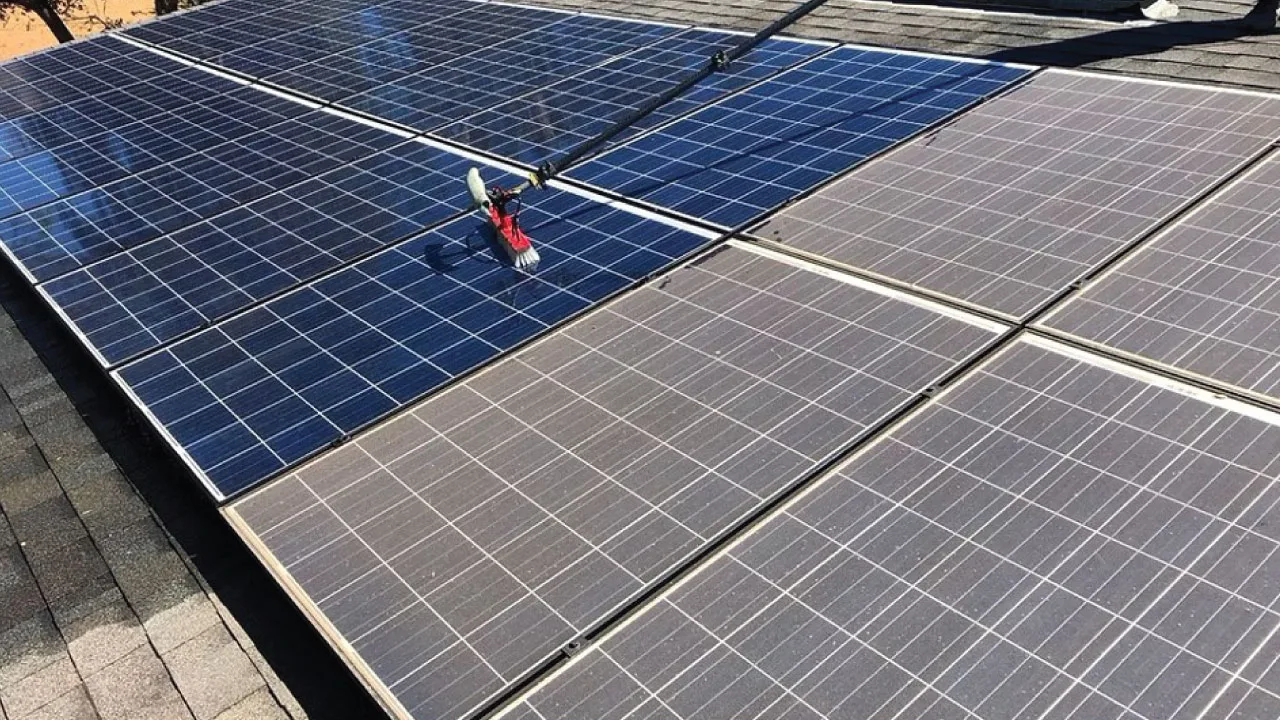
Keeping your solar panels clean is one of the simplest — yet most effective — ways to protect your investment. In Texas, with its mix of sun, dust, pollen, and unpredictable storms, your panels are constantly exposed to buildup that can affect performance.
The question many homeowners ask is: How often should solar panels be cleaned? The answer depends on your location, environment, and weather conditions. Let’s break it down.
1. The General Rule: Twice a Year
For most Texas homeowners, cleaning solar panels twice a year is ideal — typically once in spring and once in fall.
- Spring Cleaning removes pollen, dust, and debris that accumulate during the dry months.
- Fall Cleaning clears off dirt, bird droppings, and residue from summer storms.
This schedule ensures your system maintains peak efficiency year-round.
2. After Major Storms or Hail
Texas weather can be unpredictable, and after any major storm, it’s important to have your panels inspected and cleaned. Storms often leave behind:
- Mud splatter from rain
- Tree debris or leaves
- Hail or wind damage
A quick post-storm cleaning and inspection can restore full performance and prevent hidden damage from causing long-term issues.
3. Homes in Dusty or Rural Areas
If you live near open fields, farms, or unpaved roads, your panels are likely exposed to more dust and dirt than those in urban areas. In these environments, quarterly cleanings (every three months) may be best.
Dust accumulation can significantly reduce sunlight absorption, lowering your power production by up to 25%.
4. Urban or Suburban Areas
In the Dallas–Fort Worth metro area, pollution and construction dust can still affect panel performance, though not as quickly as rural areas. A biannual cleaning schedule usually keeps systems in great shape.
Homeowners near ongoing construction zones may benefit from an extra mid-year cleaning.
5. Areas with High Pollen or Tree Coverage
Tree coverage offers shade, but it also means falling leaves, sap, and bird droppings. If your panels sit under or near trees, you’ll likely need more frequent cleaning — every three to four months to maintain full sunlight exposure.
6. Signs It’s Time for Cleaning
Even if you’re on a schedule, it’s smart to watch for these signs that your panels need cleaning sooner:
- Noticeable drops in energy production
- Panels appear hazy or streaked
- Monitoring app shows inconsistent output
- After storms or high winds
- Excess pollen or visible debris
If you notice any of these, it’s time to call for a professional cleaning.
7. Why Professional Cleaning Matters
While it might seem easy to rinse panels with a hose, improper cleaning can cause scratches or leave behind mineral spots that reduce efficiency.
Professional solar cleaners use purified water, soft brushes, and non-abrasive tools that clean panels thoroughly without damaging them — and they check your mounts and wiring while they’re at it.
8. Seasonal Cleaning Tips for Texas
- Spring: Remove pollen and tree sap before summer heat sets in.
- Summer: Inspect for storm debris and dry dust buildup.
- Fall: Clean off leaves and dirt from fall winds.
- Winter: Check for water stains or mineral spots from rain.
Regular cleaning during these transitions ensures steady output through every Texas season.
9. The Cost of Neglecting Cleaning
Skipping regular cleanings may not seem like a big deal, but over time, it leads to:
- Lower energy efficiency
- Shorter system lifespan
- Higher risk of corrosion or wiring issues
- Voided warranties
Routine maintenance costs far less than replacing panels or dealing with long-term energy losses.
10. Long-Term Efficiency Pays Off
Clean panels not only look better — they work better. Regular cleaning keeps your system running efficiently, ensuring maximum energy savings, longer system life, and greater return on investment.














